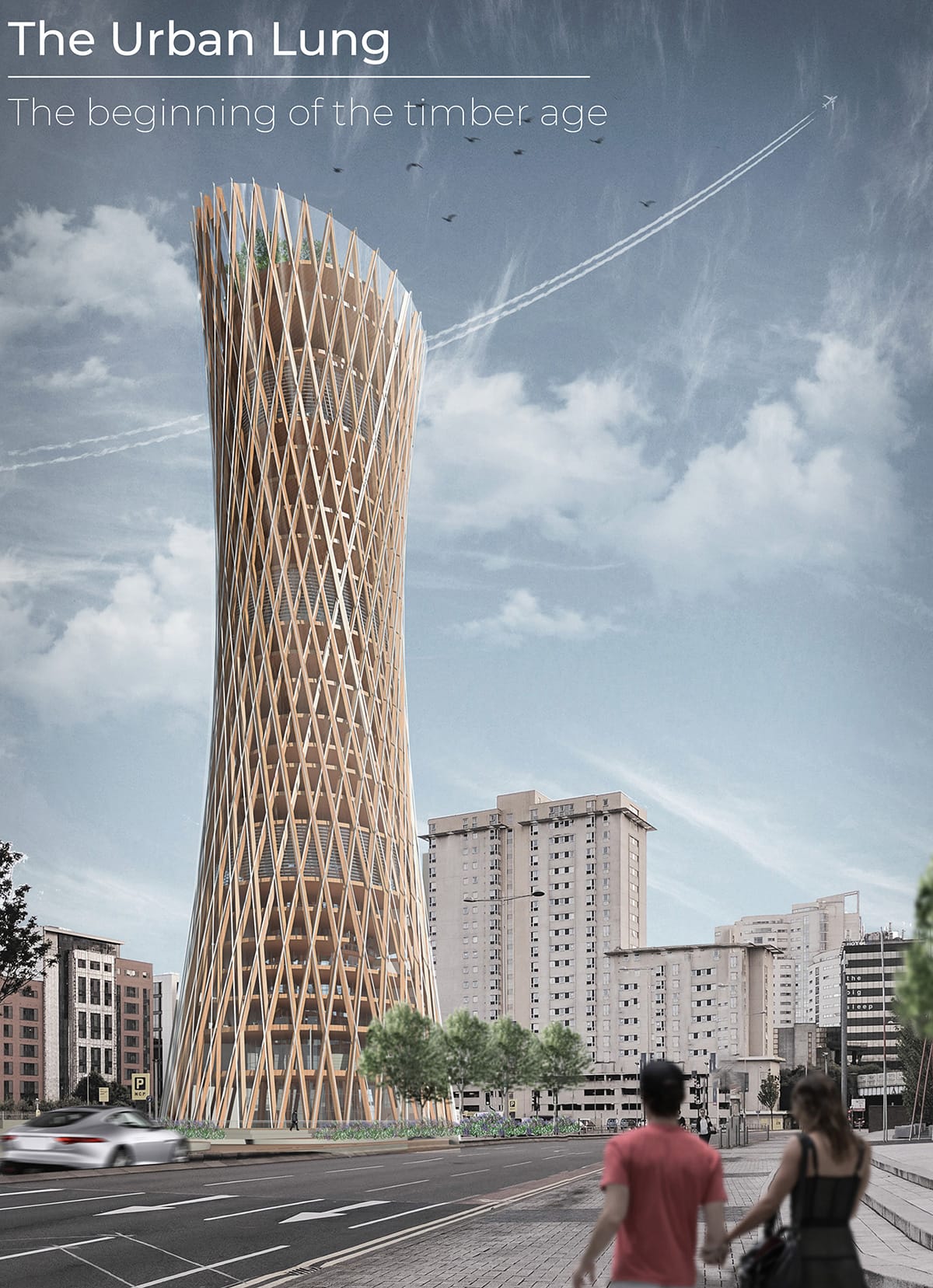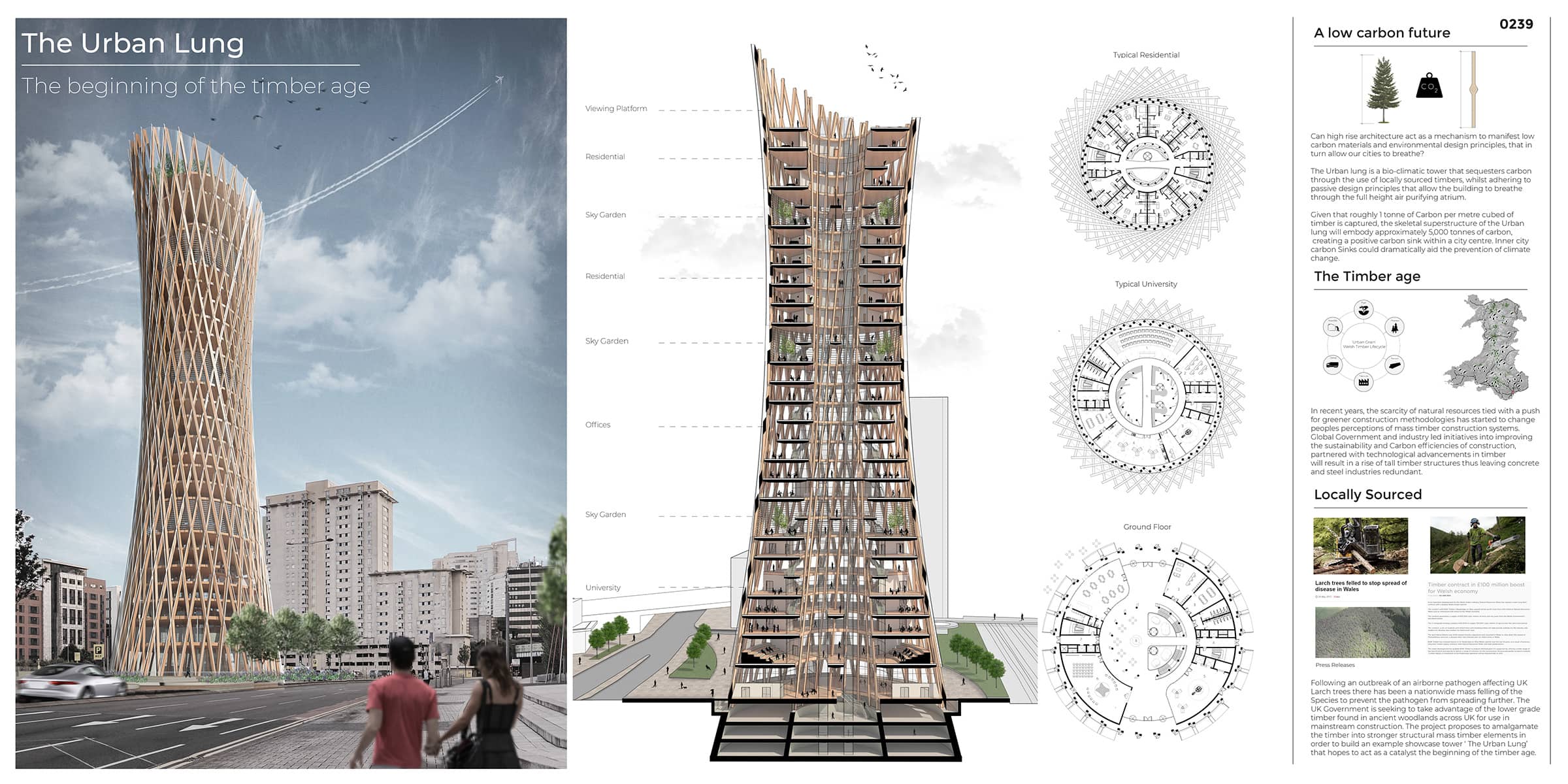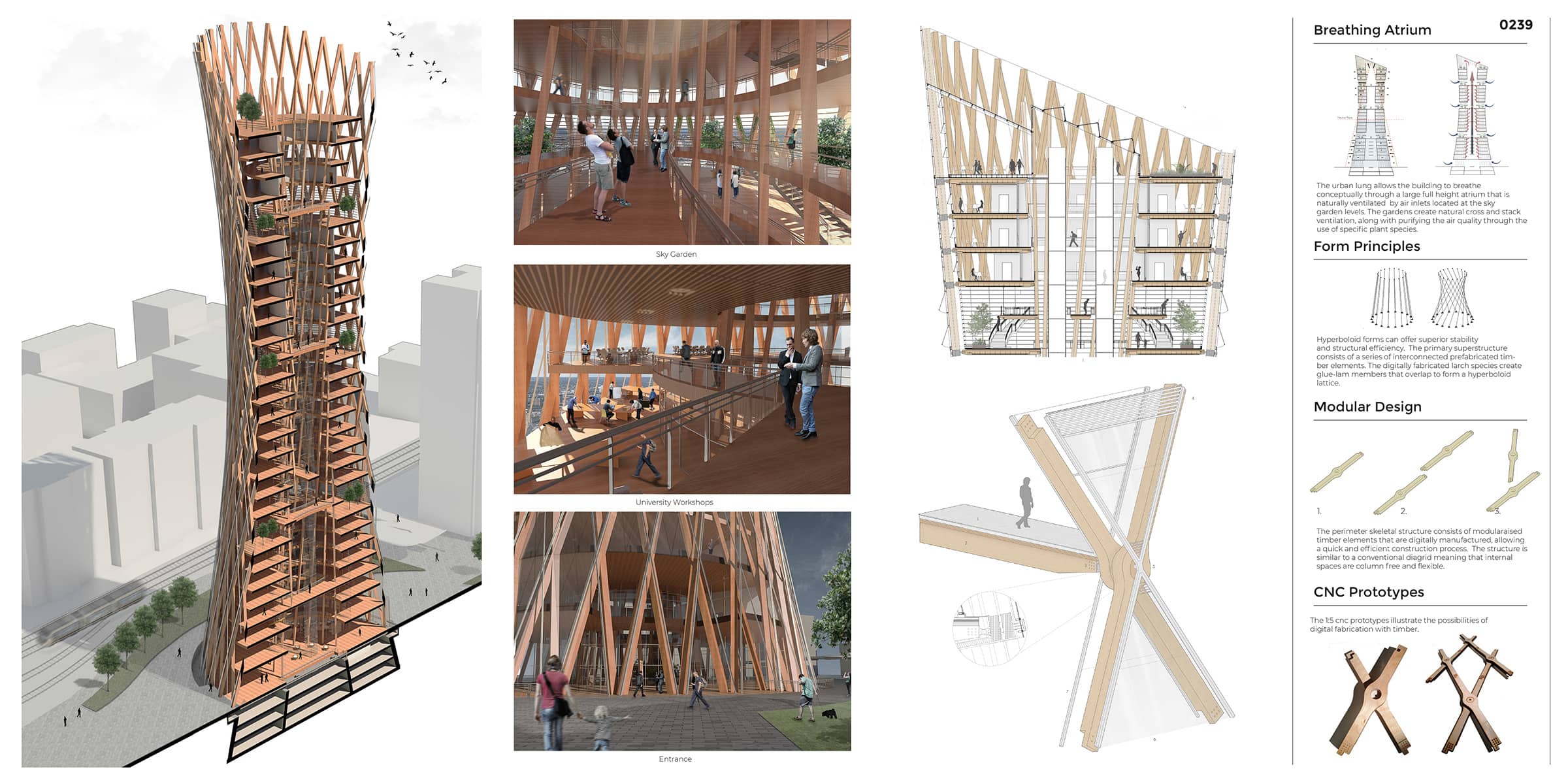Honorable Mention
2018 Skyscraper Competition
Ryan Gormley
United Kingdom

The beginning of the Timber Age
Can high rise architecture act as a mechanism to manifest low carbon materials and environmental design principles allowing our cities to breathe?
In recent years, the scarcity of natural resources tied with a push for greener construction methodologies has started to change perceptions of mass timber construction systems. Global Government and industry led initiatives into improving the sustainability and Carbon efficiencies of construction partnered with technological advancements in timber technologies will result in a rise of tall timber structures. The project explores the possibilities of using timber for the creation of high rise architecture by carefully considering material sourcing, structural performance, environment, digital design and off site fabrication issues. Implementing prefabricated timber systems not only reduces carbon emissions when compared with steel and concrete, but instead captures embodied carbon within the timber itself. The rule of thumb is that an average 1m3 of timber can store 1 ton of co2. This means that architectural interventions within the built environment can act as Carbon sinks thus improving the sustainability of our cities.
A low carbon future
The Urban lung is a bio-climatic tower that sequesters carbon through locally sourced materials, whilst adhering to passive design principles that allow the building to breathe both metaphorically through the embodied carbon from local timbers and physically through the full height air purifying atrium.
The tower aims to act as a showcase of innovation for a new construction industry that is sensitive to natural resource depletion and practices sustainable material sourcing and Low carbon construction. Given that roughly 1 tonne of Carbon per metre cubed of timber is sequestered in timber, the skeletal superstructure of the Urban lung will embody approximately 5,000 tonnes of carbon creating a positive carbon sink within the city.
Context
Following an outbreak of an airborne pathogen ‘Phytophthora ramorum’ affecting British and European Larch trees there has been a nationwide mass felling of the species to prevent the pathogen from spreading further. This in turn has created an excess of larch timber in which the Government is seeking to be implemented for use in construction for the first time.
The Welsh government has begun a new 100 million contract to implement the harvesting of the infected trees in order to salvage what can still be utilized for timber based construction. The trees will travel a short distant of 20 miles from the ancient woodlands to the Primary site of the tower in Cardiff city centre. Cardiff was once the largest import/export of coal during the industrial revolution, however this project signifies the start of a greener more sustainable approach high rise architecture not only in Wales but across the globe.
Programme
The Urban Lung houses a centralised timber research and development campus that expands the University of South Wales engineering and architecture department already located on site, along with the headquarters of the Timber Research and Development Association (TRADA) in hope to bridge the gap between education and industry by inspiring a new influx of designers, engineers, and architects. Cardiff’s declining coal and steel industries will now shift towards the beginning of the timber age.


This work is licensed under a Creative Commons License permitting non-commercial sharing with attribution. https://creativecommons.org/licenses/by-nc-nd/4.0/



